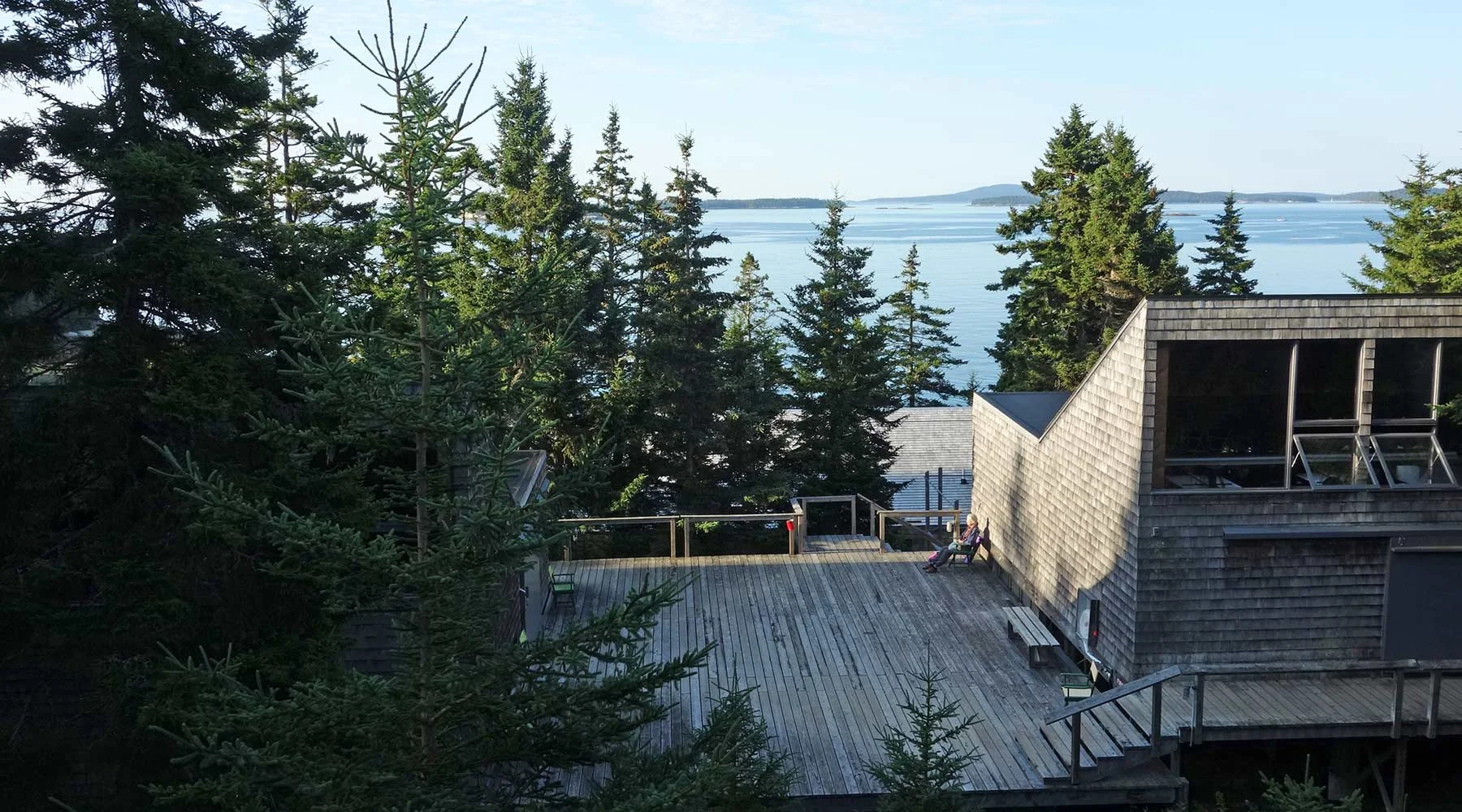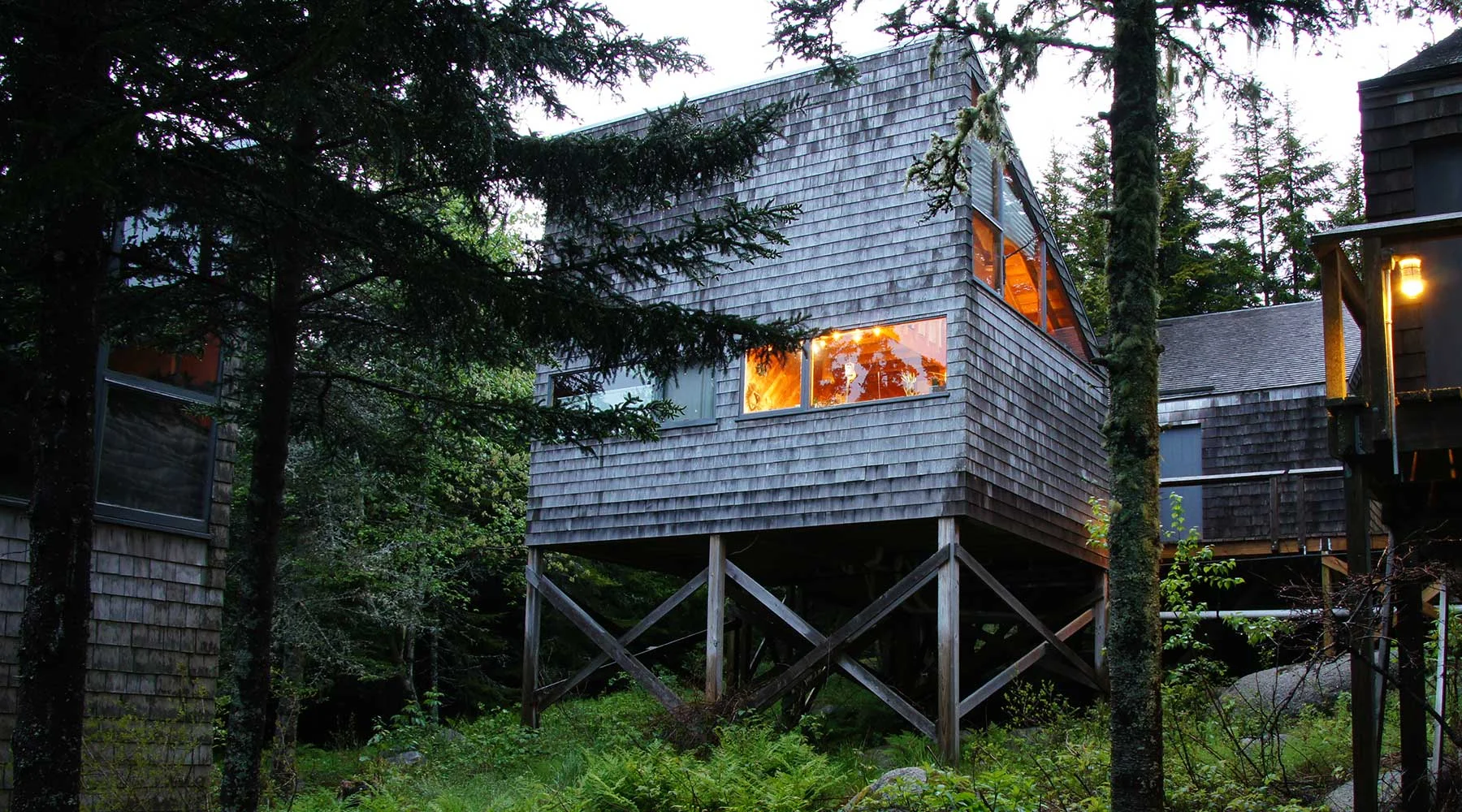Located on Stinson Neck and built on a cliff, overlooking Jericho Bay in the Atlantic Ocean, Haystack’s campus is located on forty, wooded acres in the small island community of Deer Isle, Maine.
ARCHITECTURE
The campus was designed in 1960 by noted American architect Edward Larrabee Barnes, and in 1994 was awarded the Twenty-five Year Award from the American Institute of Architects, one of only forty-nine buildings in the United States to receive this distinction. In 2006 Haystack Mountain School of Crafts was added to the National Register of Historic Places. The school’s award-winning campus was represented in the Portland, Maine exhibition, maine modern: 50 years of modern architecture in maine, from October 1-31, 2010.
The dramatic central stairway, cascading down to the swirling waters below, grabs your attention first. It is flanked on either side by weathered cedar-shingled studios, a spacious dining hall, and the student and faculty cabins. Standing at the top, one can view the white and pink granite shores along Merchants Row, an archipelago of 30 or 40 islands peppering the horizon.
Six workshop studios (ceramics, fiber, graphics, hotshop: iron/glass, metals, and wood), a digital fabrication lab—the Haystack Fab Lab—and a visiting artist studio are situated on Haystack’s campus, along with a dining hall; the 100-seat Gateway Auditorium, which is a central gathering place for lectures, performances, and end-of-session auctions; Haystack’s library, rebuilt in 1997, holds over 1000 titles, including fine craft books, exhibition catalogs, art journals, and scholarly monographs; and the well-equipped Haystack Store that provides artists’ supplies and quality books.
“Haystack is like a marina that floats over land instead of water, a village of shingled pavilions – workshops and dormitory cabins – all lifted up a couple of feet on posts and connected by a network of decks and walkways… The building was instantly accepted as a classic and became a major influence on the American architecture of the 1960’s.”
Haystack program participants stay in cabins designed by American architect Edward Larrabee Barnes. There are dorms (that house up to eleven people), triples, and doubles—all located near a central washroom; as well as a quad, doubles, and singles with bathroom facilities. All cabins have twin beds.












